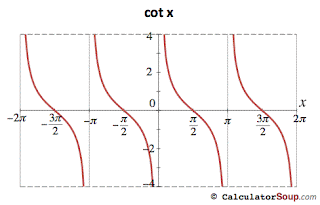PreCalculus A (3rd Hour, Fall 2011)
Thursday, December 15, 2011
Chapter 5
Wednesday, December 14, 2011
My feelings on chapter 5
Monday, December 12, 2011
5.4 Sum and difference formulas
Sum and difference formulas

Sin:
sin(u+v) = sin u cos v + cos v sin u
sin(u-v) = sin u cos v - cos v sin u
Cos:
cos(u+v) = cos u cos v - sin u sinv
cos(u-v) = cos u cos v + sin u sinv
Tan:
tan(u+v) = tan u + tan v / 1-tan u tan v
tan(u-v) = tan u - tan v / 1+tan u tan v

Example:
Find the exact cos of 75 degrees.
cos75
= cos(30+45)
= cos30cos45 - sin30sin45
= .259
By Jake Badalamenti
Wednesday, November 9, 2011
Inverse Trigonometric Functions
As learned in previous chapters, functions can only have inverses if they are one to one, if each of their x values have only one y value and each y value has only one x value. Obviously, sine, cosine and tangent functions are not one to one, as their graphs all fail the horizontal line test miserably.
SINE
COSINE
TANGENT
But these functions do have inverses.
How? By setting a very small domain for each function that allows each function to become one to one.
As you can see from the picture below, in this small chunk of the graph, this sine function is one to one.
This is because its domain is [-π/2, π/2].
To have an inverse:
Sine:
Domain:[-π/2, π/2]
Range: [-1, 1]
Because the inverse flips the domain and range:
-Sine:
Domain: [-1, 1]
Range: [-π/2, π/2]
The cosine function has a different domain than the sine function
To have an inverse:
Cosine:
Domain: [0, π]
Range: [-1,1]
And again:
-Cosine:
Domain; [-1, 1]
Range: [0, π]
The tangent function is easier than the sine and cosine functions, as it is just one period of the graph.
To have an inverse:
Tangent:
Domain: [-π/2, π/2]
Range: [-∞, ∞]
Other Things to Remember:
-The output of an inverse trig function is ALWAYS an angle.
All Inverse functions posses the properties:
f[ƒ−1(x)] = x and ƒ−1[f(x)] = x
These properties are also used with inverse trig functions
If -1 ≤ x ≤ 1 and (π/2)≤ y ≤ π, then
sin(-sin x) =x and –sin(sin y) =y
If -1 ≤ x ≤1 and 0 ≤ y ≤ π, then
cos(-cos x) = x and –cos(cos y) =y
If x is a real number and (–π/2)< y < π/2, then
tan(-tan x) =x and –tan(tan y) = y
Remember that these properties do not apply for values outside of the intervals given. For instance:
-sin[sin (3 π/2)] = -sin(-1) = - π/2 not 3 π/2
You can also use these properties to re-write a trig function without using trig values. For instance,
sin(-cosx)
-cos x= Θ
x = cos Θ
Adj. = x
Hyp. = 1
= Opp.
Tuesday, November 8, 2011
Wednesday, November 2, 2011
4.5 Graphs of Sine and Cosine Functions
or
The constant factor of a in y=asinx acts as a scaling factor- a vertical stretch or vertical shrink of the basic sine curve. If , the basic sine curve is stretched, and if
, the basic sine curve is shrunk. The result is that the graph of y=asinx ranges between -a and a instead of -1 and 1.
The amplitude of and
represents half the distance between the maximum and minimum values of the function and is given by:
Let b be a positive real number. The period of and
is given by:
Note that if , the period of
is greater than
and represents a horizontal stretching of the graph of
. Similarly, if
, the period of
is less than
and represents a horizontal shrinking of the graph of
.
The constant c creates horizontal translations (shifts) of the basic sine and cosine curves.
The graph of is shifted by an amount of
. The number
is the phase shift.
The left and right endpoints of a one-cycle interval can be determined by solving the equations and
.












